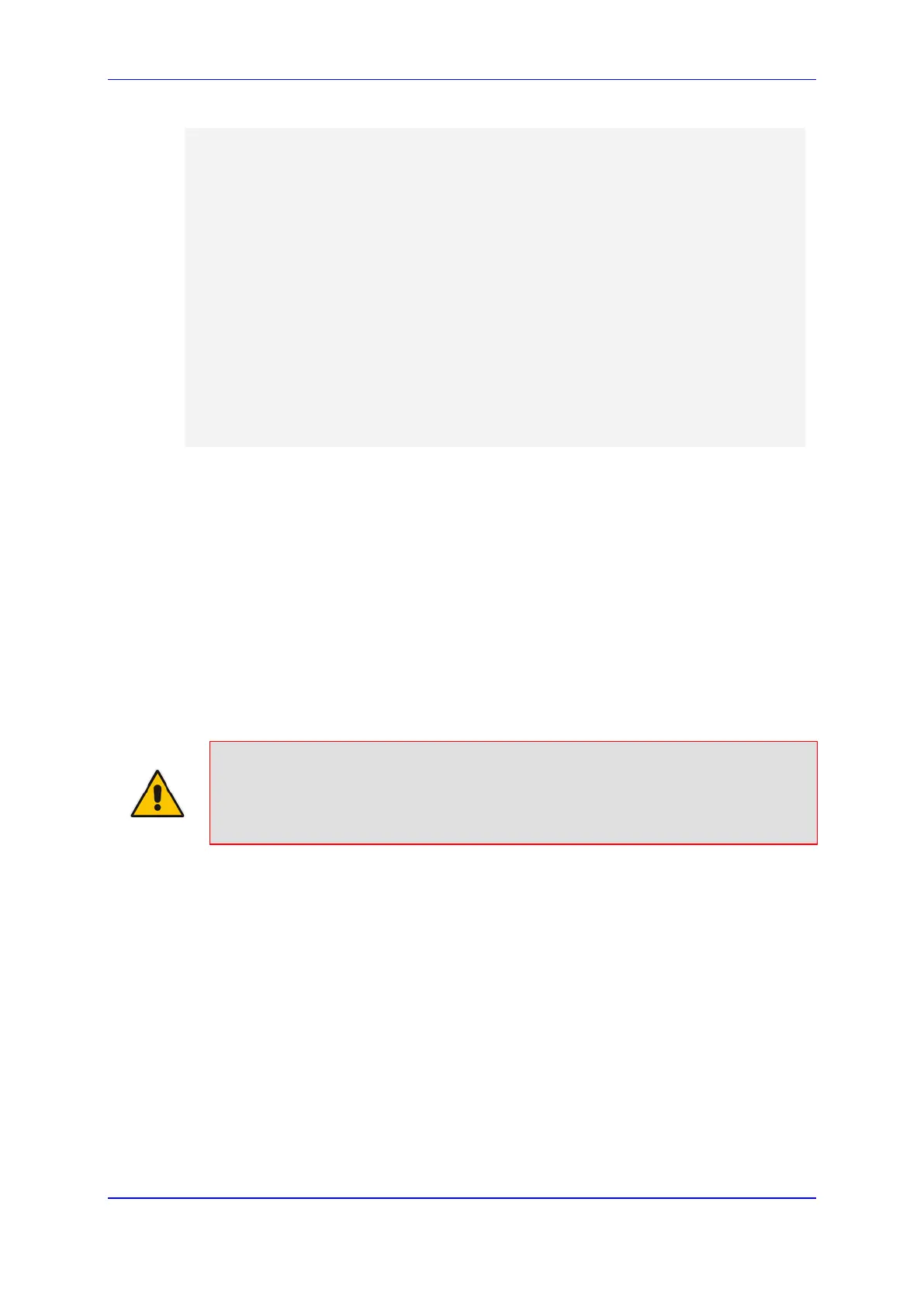Version 6.6 429 Mediant 2000
User's Manual 34. Automatic Update
ddns-update-style ad-hoc;
default-lease-time 3600;
max-lease-time 3600;
class "audiocodes" {
match if(substring(hardware, 1, 3) = 00:90:8f);
}
subnet 10.31.0.0 netmask 255.255.0.0 {
pool {
allow members of "audiocodes";
range 10.31.4.53 10.31.4.75;
option routers 10.31.0.1;
option subnet-mask 255.255.0.0;
option domain-name-servers 10.1.0.11;
option bootfile-name
"INI=http://www.corp.com/master.ini";
option dhcp-parameter-request-list 1,3,6,51,67;
}
}
34.4.4 TFTP Configuration using DHCP Option 66
This method is suitable when the customer's network contains a provisioning TFTP server
for all network equipment, without being able to distinguish between AudioCodes and non-
AudioCodes devices.
Upon startup, the device searches for Option 66 in the DHCP response from the DHCP
server. If Option 66 contains a valid IP address, the device attempts to download through
TFTP a file with a name that contains the device's MAC address (e.g., 00908f0130aa.ini).
This method requires a provisioning server at the customer premises.
This method loads the configuration file to the device as a one-time action. The download
is only repeated if the device is manually restored to factory defaults (by pressing the
hardware reset button while the Ethernet cable is not connected) and DHCP is enabled
(see note below).
Notes:
• For TFTP configuration using DHCP Option 66, enable DHCP on your device:
DHCPEnable = 1 and DHCPRequestTFTPParams = 1.
• Access to the core network using TFTP is not NAT-safe.
34.4.5 HTTP-based Automatic Updates
An HTTP/S server can be placed in the customer's network where configuration and
software updates are available for download. This does not require additional servers at
the customer premises and is NAT-safe.
For example, assume the core network HTTPS server is https://www.corp.com. A master
configuration ini file should be placed on the server, e.g.,
https://www.corp.com/gateways/master.ini. This file could point to additional ini files,
auxiliary files (e.g., call progress tones), and software files (cmp), all on the same HTTP
server or different HTTP servers in the network.
The main advantage of this method is that the HTTP configuration can be checked
periodically when the device is deployed at the customer site. HTTP(S) is not sensitive to
NAT devices, enabling configuration whenever needed without on-site intervention.
For additional security, the URL may contain a different port, and username and password.

